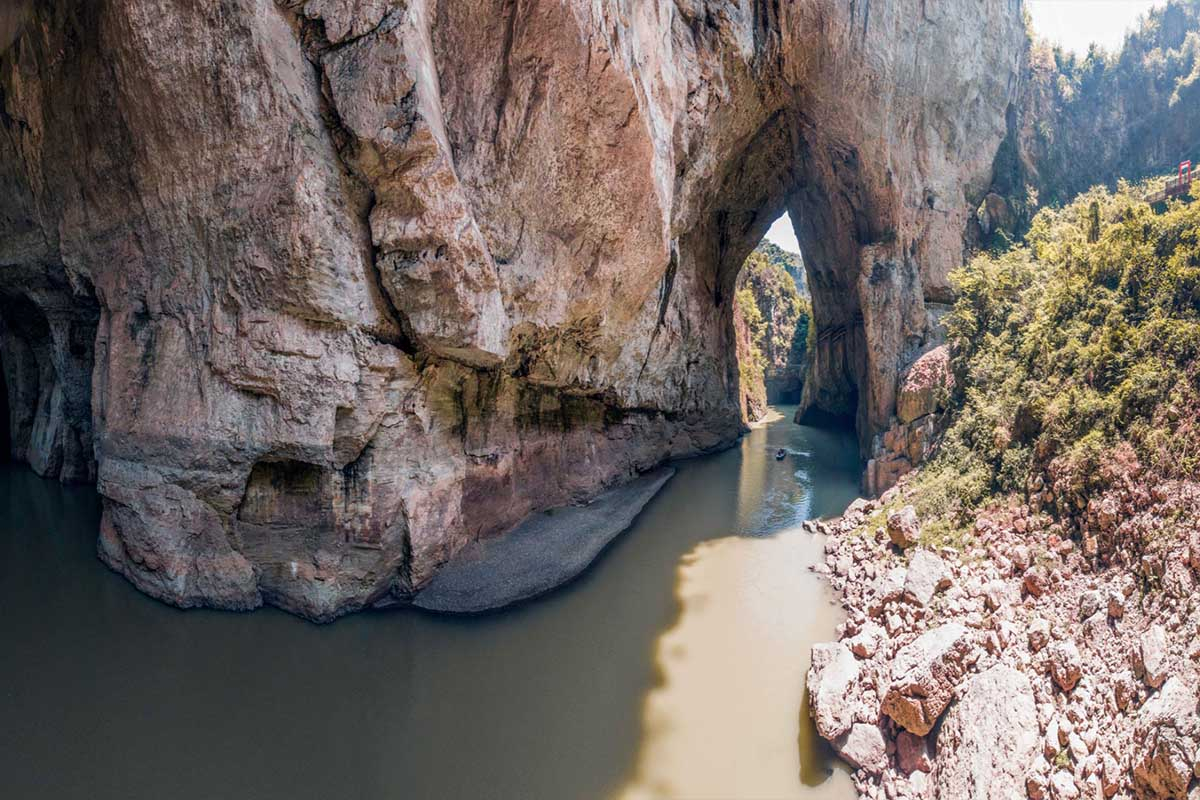
Jiudongtian Scenic Spot
Here the river sinks into the ground, known as the Guazong River swallet stream, which is about 7 kilometers long. There are nine huge skylights on the ridge of the swallet stream downstream. Boating on the river, the sky is now and then visible, hence the name "Jiudongtian(Nine Cave Sky)".
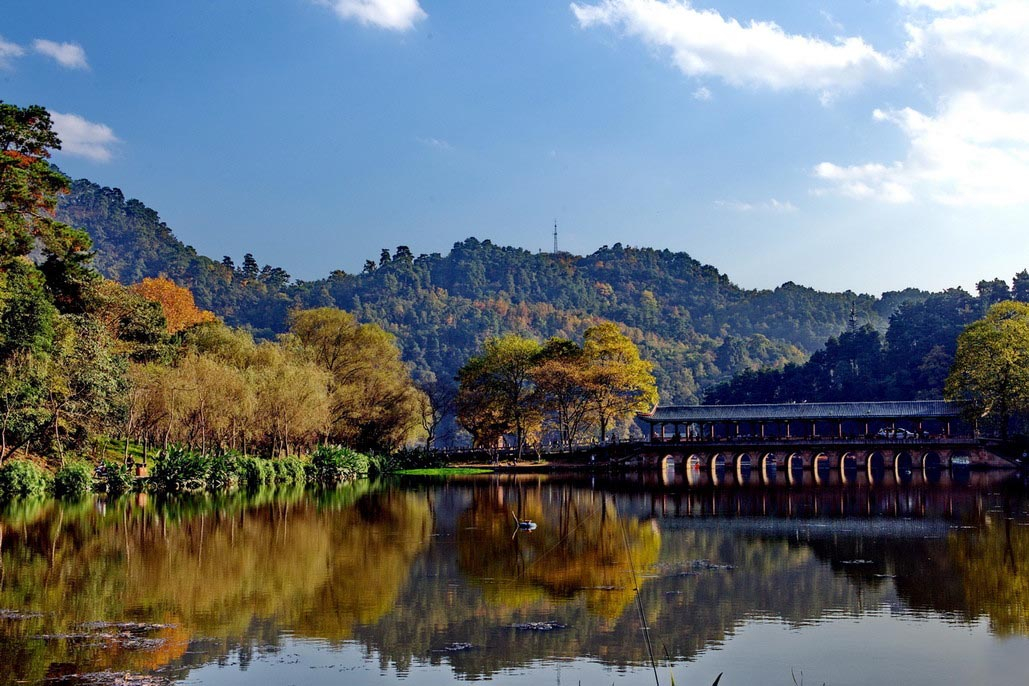
Qianling Shan Park
Qianling Shan park was named after the Qianling Mountain, which itself is one the most famous mountain in southern Guizhou.The park is famous for its lush vegetation, dense forestation and clear waters. It is a popular site of Guiyang city and a place of pilgrimage for Chinese Buddhists.
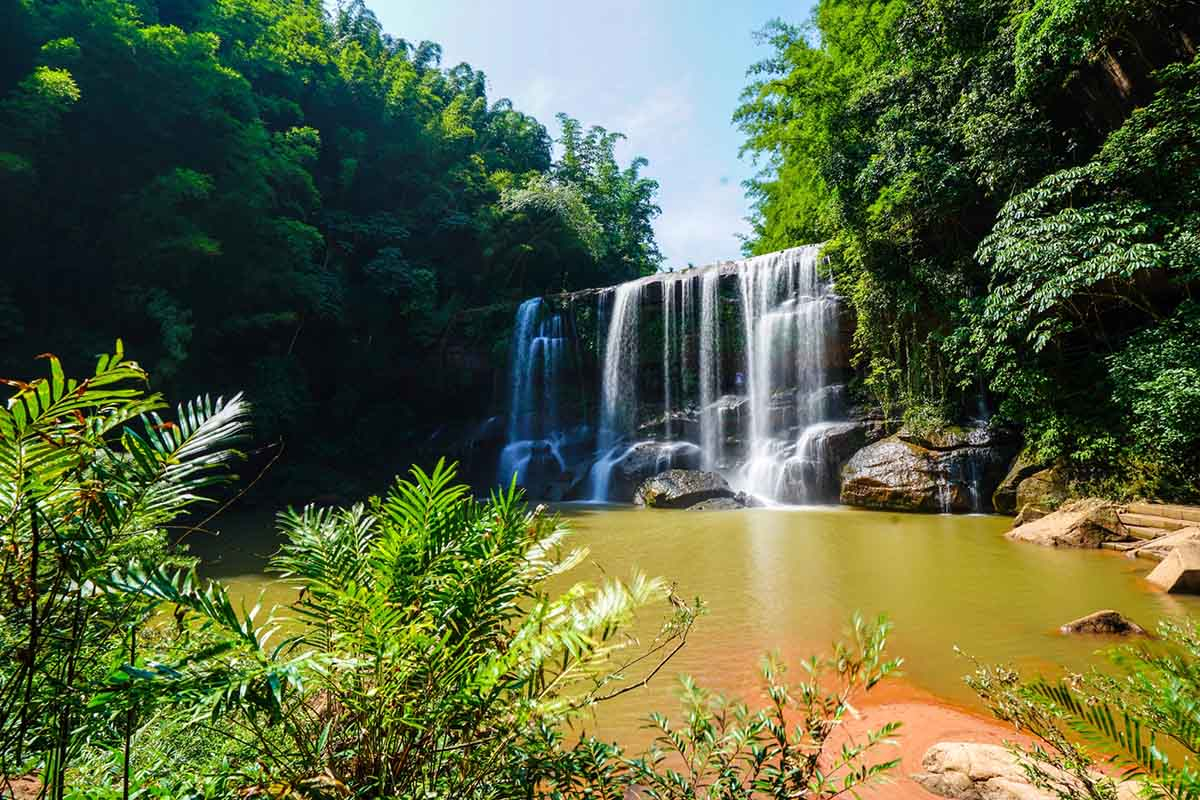
Sidonggou Scenic Area
It is consist of a series of waterfalls, brooks and old bridges. Sidonggou was called Min Brooks in the old days. It is now known as Sidonggou (four cave valley) because in its 4km length lies four big waterfalls in different shapes and sizes and each waterfall are connected to each other with caves.
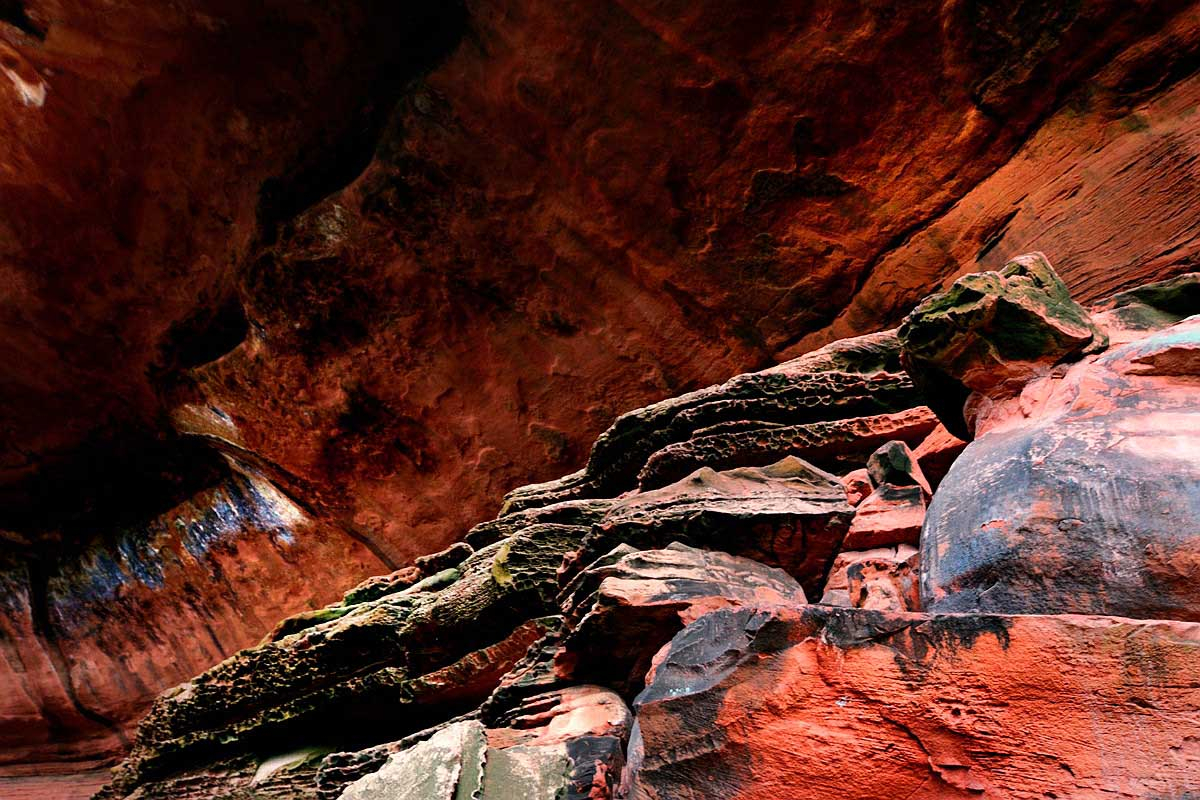
Red Stone&Wild Valley
Hongshiyegu, or Red Stone&Wild Valley, is a natural scenic spot by the side of Huaping River. It is primarily consist of wall painting on red sandstone, brooks, waterfalls and dense forests of bamboo and tree fern.
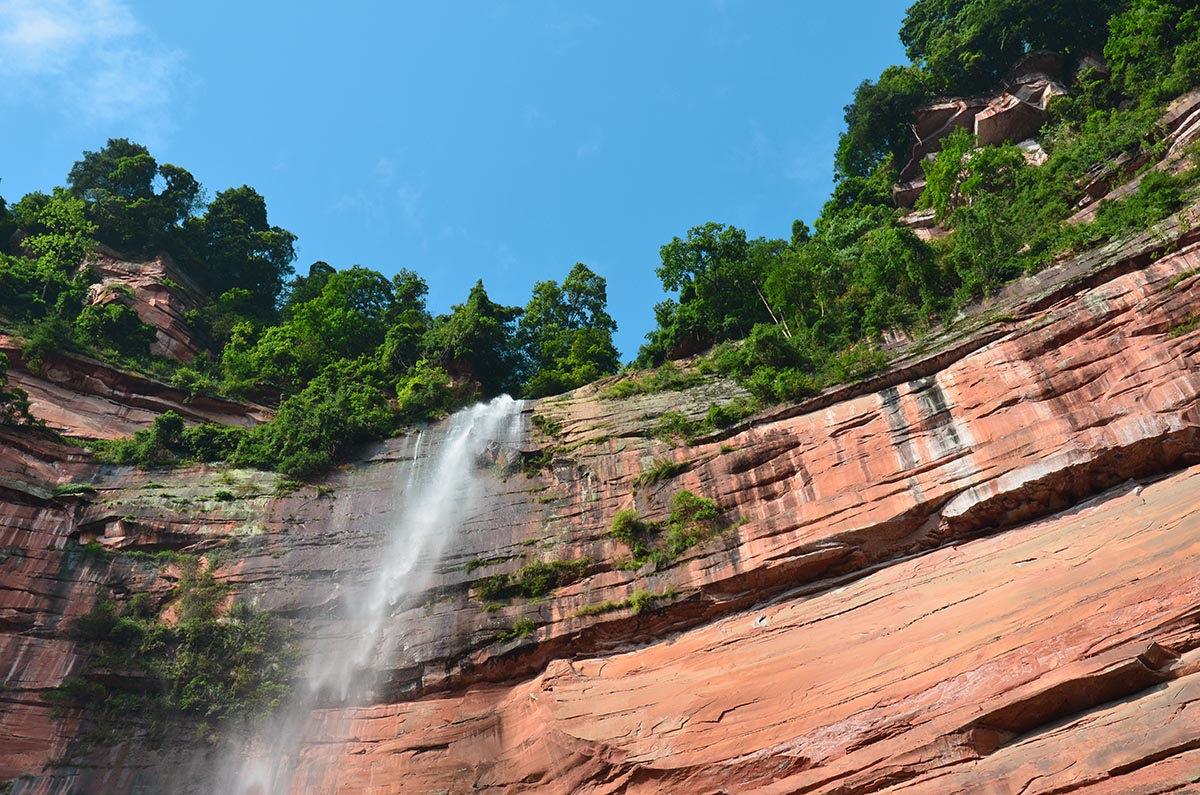
Foguangyan Scenic Spot
Danxia landscape, or known as red sandstone layer, is a unique geological landscape first recorded and studied in Danxia Mountain, Renhua County, Guangdong Province back in early days of 1920s.
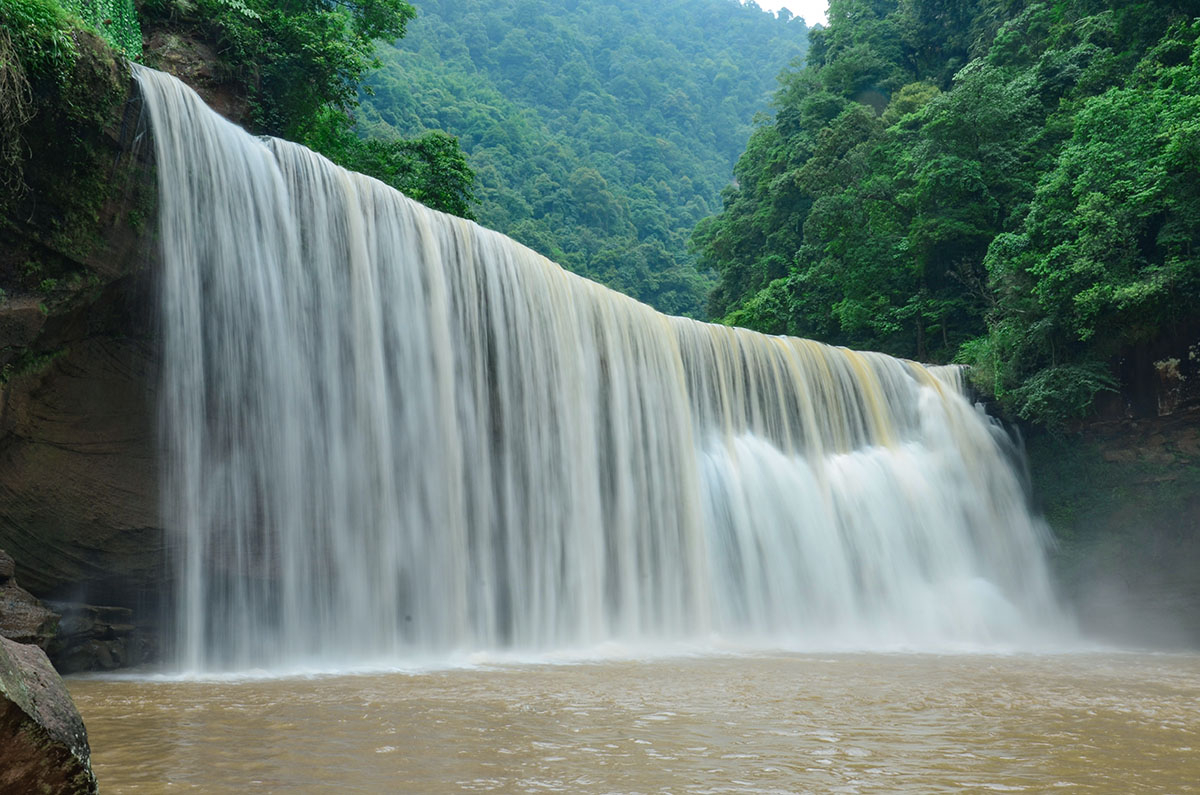
Chishui Grand Waterfall
Chishui Grand Waterfall is part of Chishui Danxia Landscape(red sandstone landscape) Scenic Area, together with Zhongdong waterfall, ancient trail, and other caves and mountain views.Chishui water sits on a 76 meter cliff and is 80 meters in width. It is the largest waterfall developed on Danxia landscape and it is the largest waterfall on Yangtze River water system.
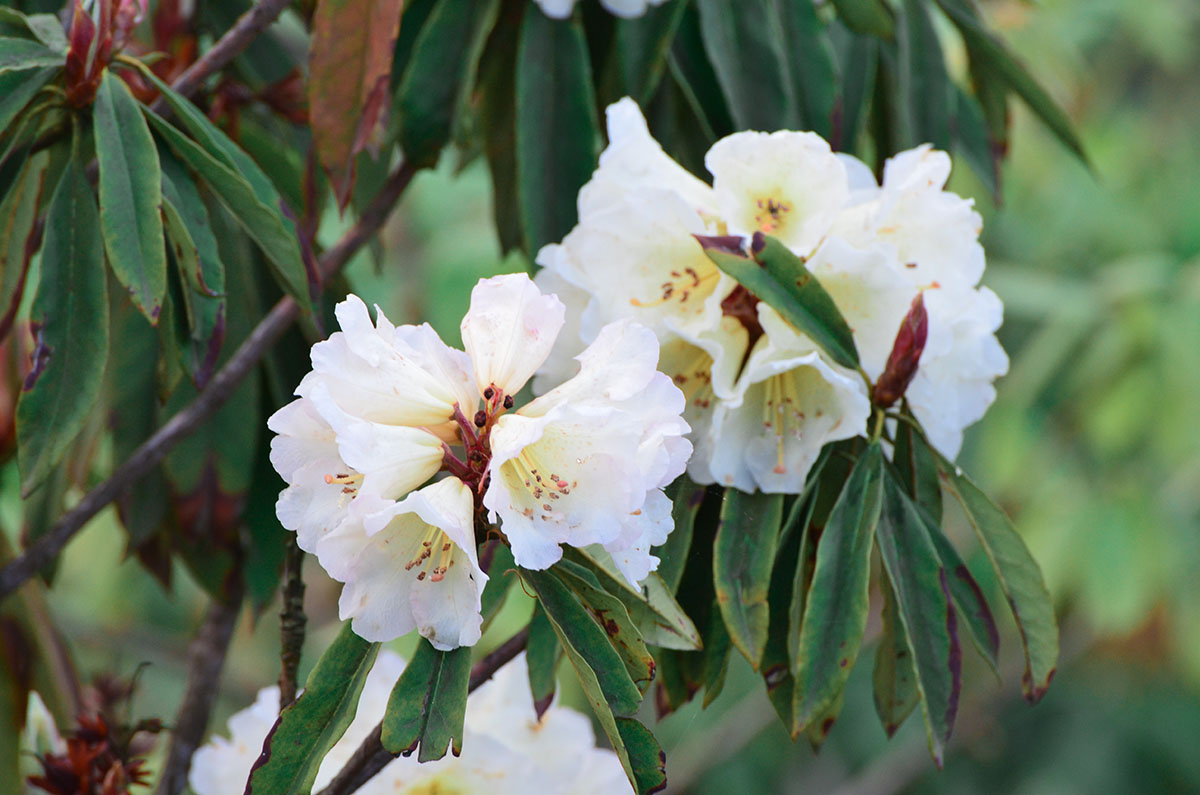
Baili Azalea Scenic Spot
Baili Dujuan is in a warm temperature zone and enjoys a warm and wet monsoon climate. This provides a perfect climatic environment for Azalea plants. Every year from March to April, this area turns into a sea of Azalea flowers. Apart from floral sea, this region is also home to many flora and fauna.

Anshun Dragon Palace
This site has one of the longest and most beautiful caste caves in China. Cave One is 840 meters in length and is full a exotic looking crystals and stalactites. Cave Two is 400 meters long; consist of four main cavities and many turns and twists. A boat trip inside these caves is considered a life time experience.
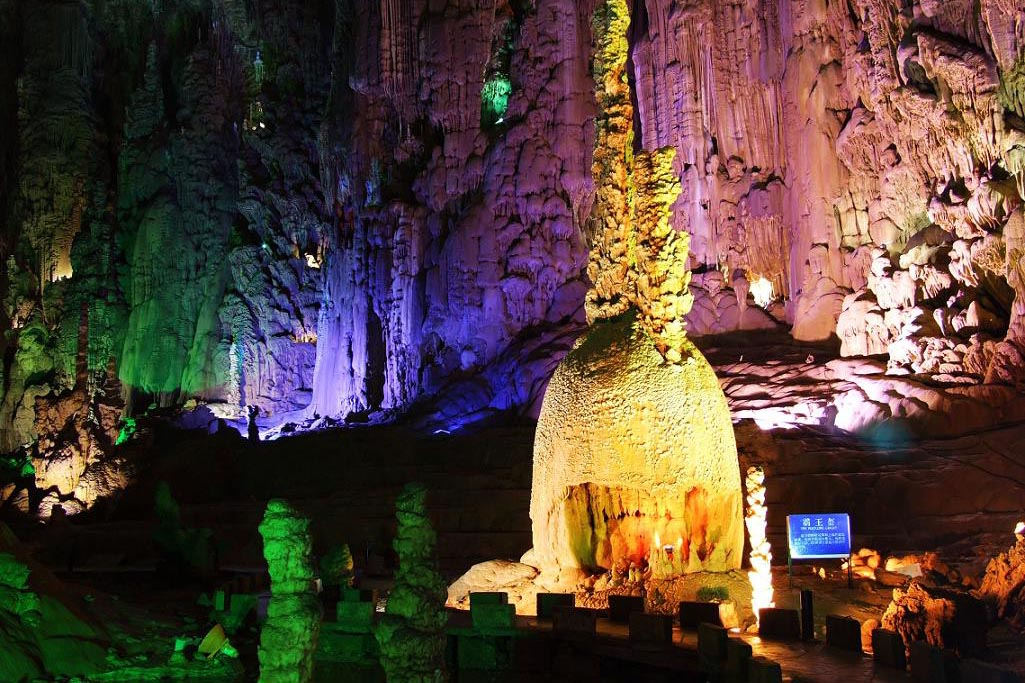
Zhijin Cave
Zhijin Cave was rated the first of China's Six Most Beautiful Tourist Caves, the Most Beautiful Tourist Attractions in China - the First of China's Top Ten Strange Caves. The tunnels crisscross, stone peaks scatter everywhere, running water, intermittent ponds, underground lakes are scattered among these. It is praised as Karst Treasure and Karst Cave Wonder.
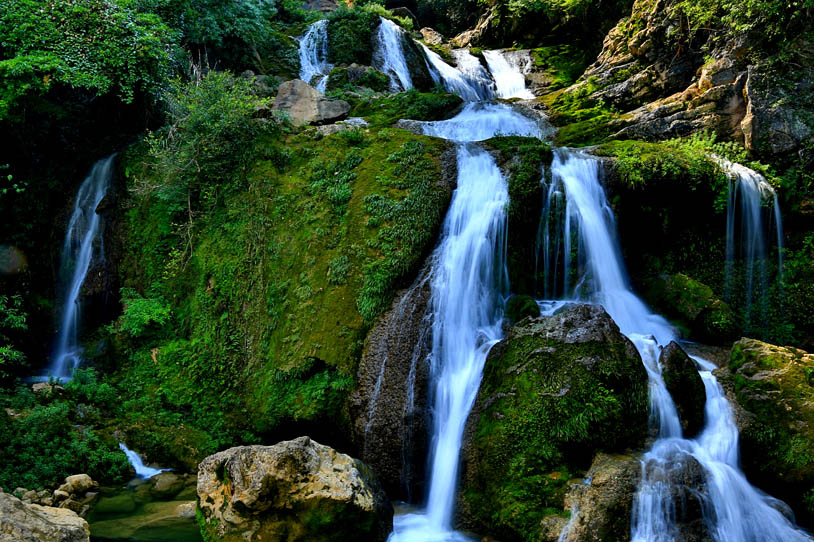
Maolan National Nature Reserve
Maolan Nature Reserve is a minority community with numerous cultural relics and rich national scenery culture. Buyi, Shui, Miao, Yao and other ethnic minorities have unique customs in architecture, clothing, handicrafts, food, weddings and funerals which are of great value for tourism development.
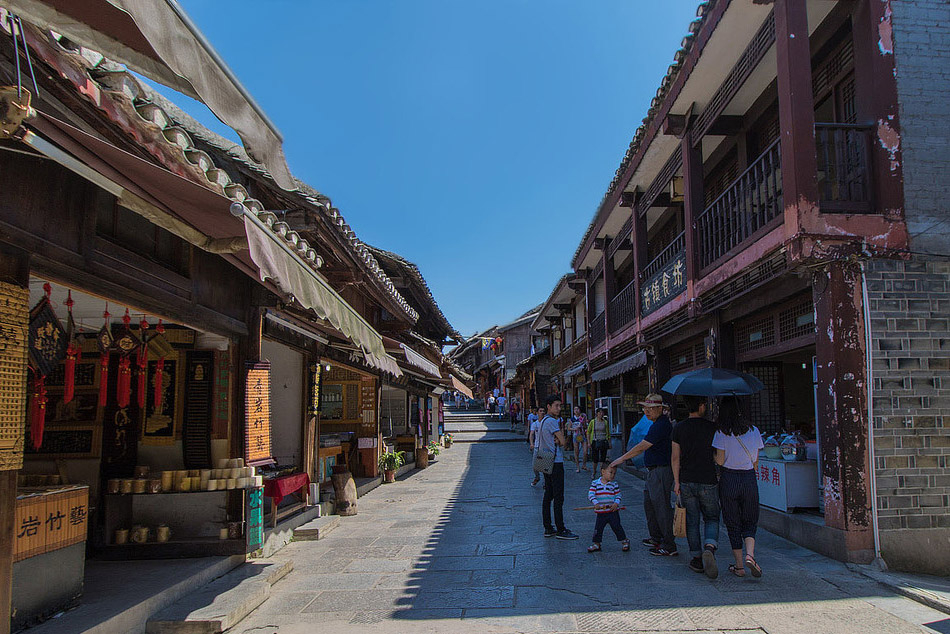
Qingyan Ancient Town
Climbing up the hill on one side of the town offers a panoramic view of the town. The town was built not on a flat surface but on a rugged hillside. Looking from above, the layout of the whole town gives people a three-dimensional beauty that is difficult to see in other ancient towns.
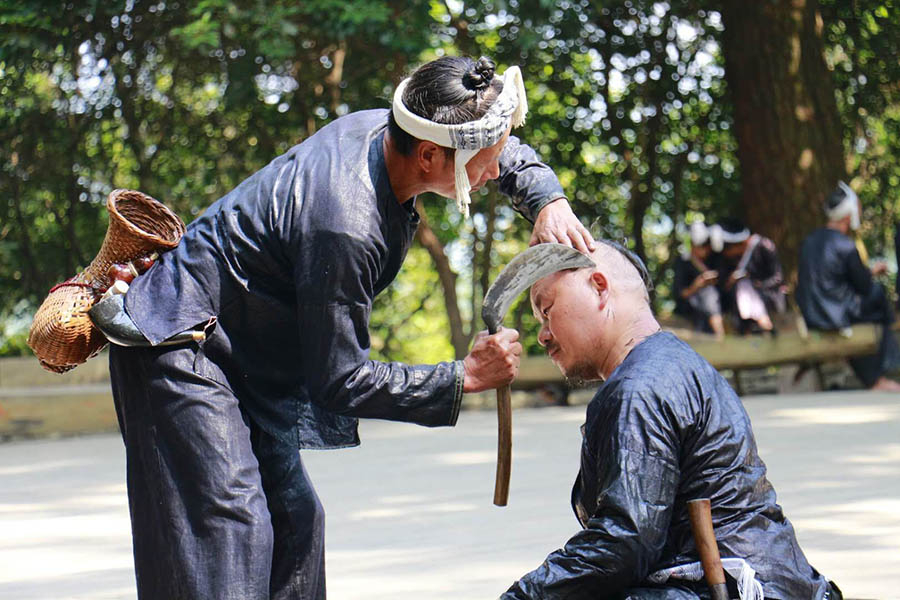
Ba Sha Miao Village
With a history spanning over 2,000 years, and tremendous cultural significance, Biasha Miao Village is an attraction that cannot be missed.The inhabitants of Biasha Miao Village have a long history with guns. The men of the village were and still are today, renowned for their marksmanship.

Sanbao Dong Village
The Sanbao Drum Tower, which was built in 2001, is over 36 metres tall and holds the Guinness World Record.Besides, there are nine Sama Temple in Sanbao Dong Villages .esides the common characteristics of Dong villages, such as unspoiled natural environment, row upon row of wooden houses in close order, well preserved primitive ways of living.
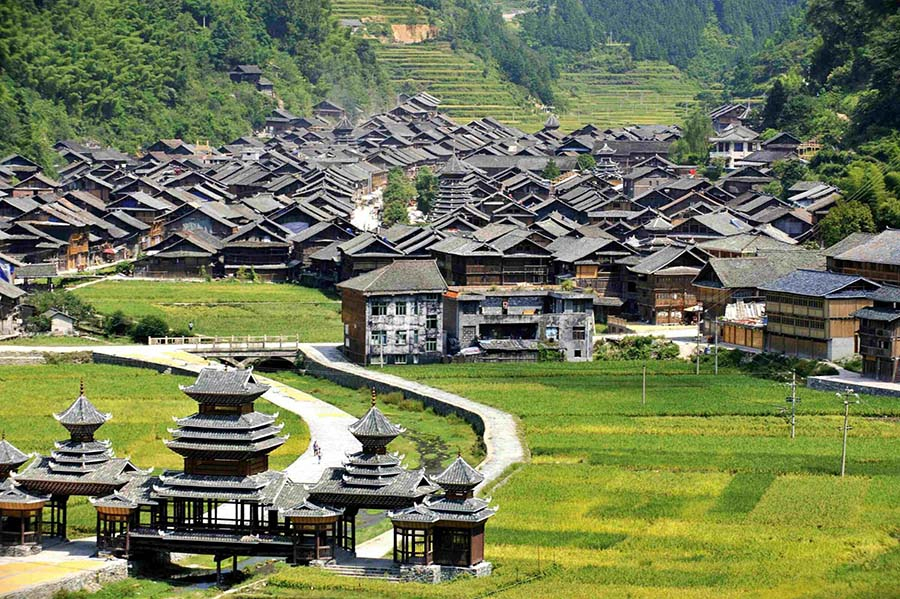
Zhaoxing Dong Village
Zhaoxing still boasts its traditional wooden structures, including a number of wind and rain bridges and theatre stages. Many of the town's inhabitants continue to wear traditional clothing and speak only their native Dong language. Surrounded by lush fields and hills, Zhaoxing is a small oasis and well worth a day's stopover.
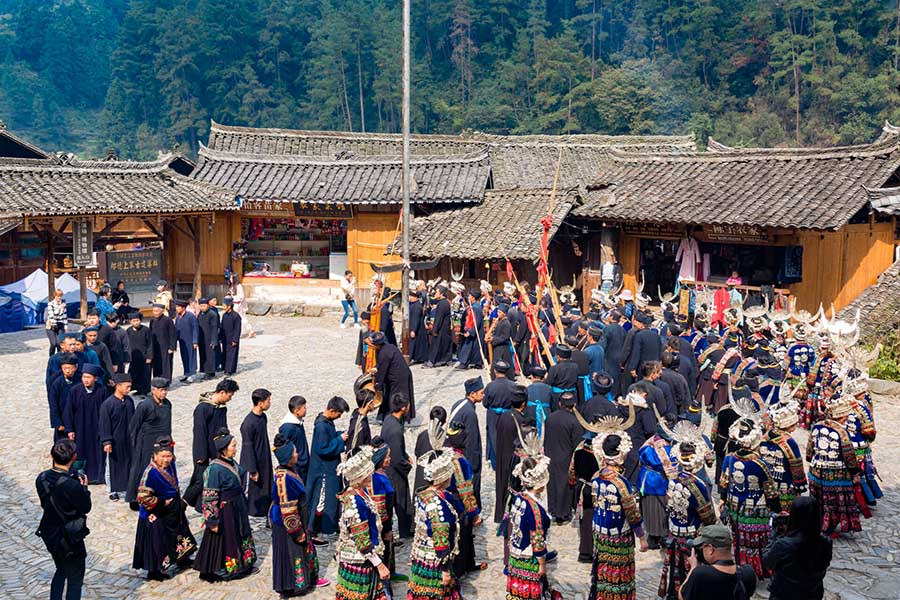
Langde Shang Miao Village
Langde Shang village is also known as the Miao's Ethnic Village Museum and will present visitors an authentic experience of Miao. a typical Miao village with well protected traditional Miao style houses, bridges in a beautiful surrounding river valley.
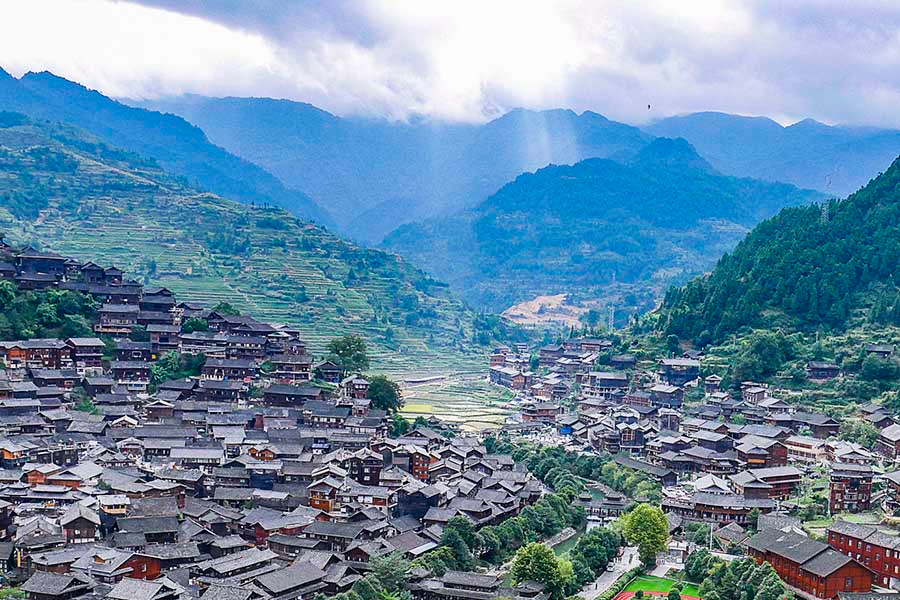
Xijiang Qianhu Miao Village
The Diaojiaolou, a kind of stilted wooden dwelling built by the Miao people, stretch up the hillsides on either side of the river. They look almost unreal, with thick wooden poles supporting the backs of the houses so that they appear to be hanging off of the hillside.
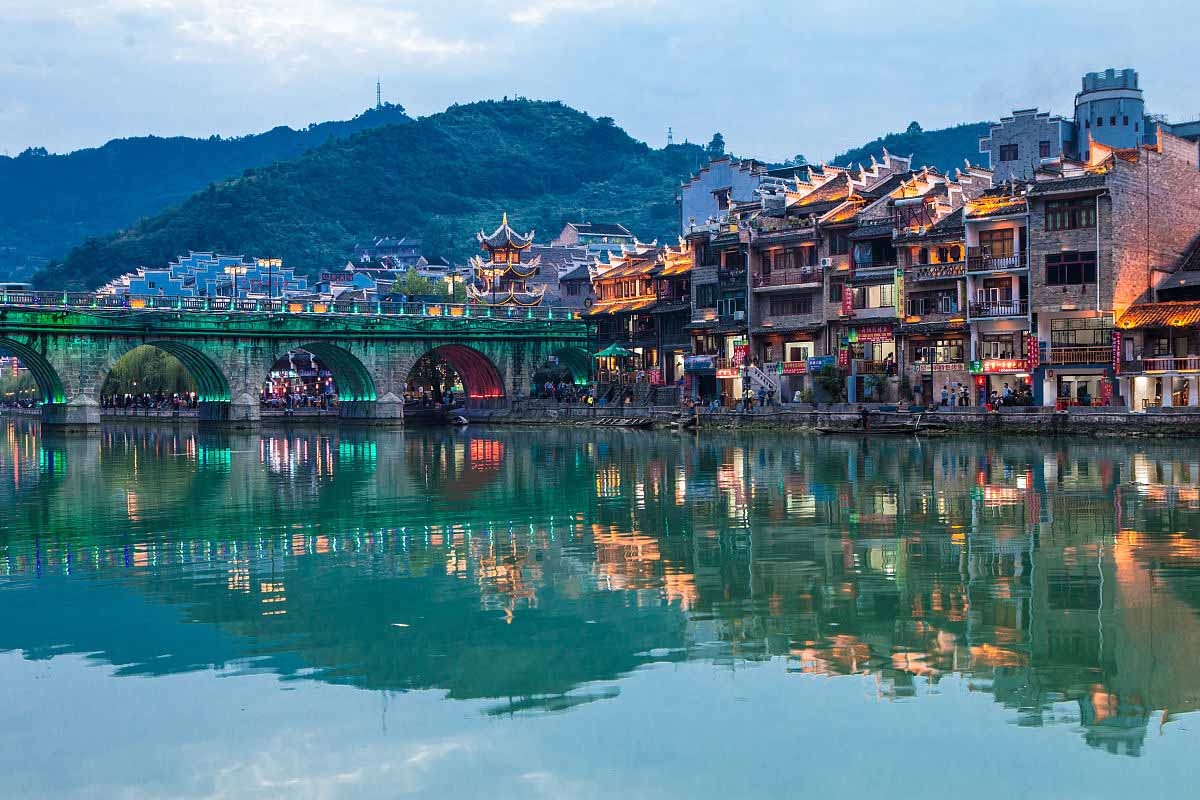
Zhenyuan Ancient Town
Taking a cruise on the Wuyang River will bring you one surprise after another. Grotesque gorges, perilous peaks and crystal-like waters present a wonderful picture before you, as if you were entering a wonderland.
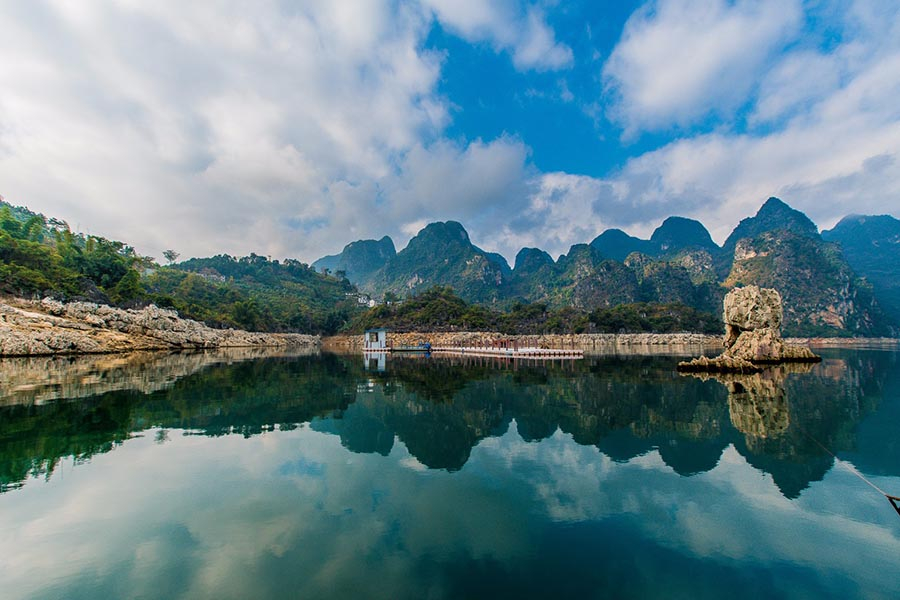
Wanfeng Lake
Wanfeng Lake presents different beautiful views in the morning, afternoon and evening. There are 90 islets and peninsulas, 12 internal lakes and 96 wetlands. The local people love this God-given amazing lake and give the major scenic spots impressive names according to their shapes.

Maling River Grand Canyon
Known as "Earth's Most Beautiful Scar", the 75-kilometer canyon offers magnificent views of its narrow rift, deep caves, impressive waterfalls and shaped calcium sediments on both faces of its steep cliffs. Its ancient temples, bridges and postal roads further enhance the area's cultural charm.
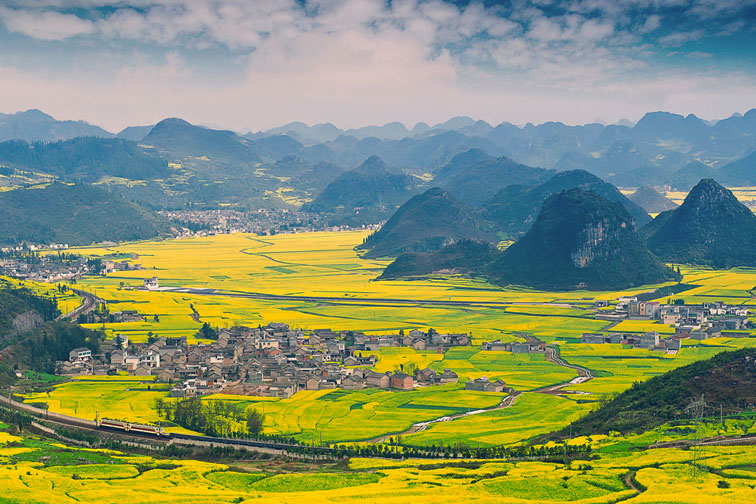
Wanfenglin Scenic Spot
You can not only see beautiful scenery here but you can enjoy minority folk custom also. there are several quaint Buoyei villages here such as Erzhai, Leli, Shuangsheng, Yulong, and Nahui where one can experience Buoyei customs and culture.